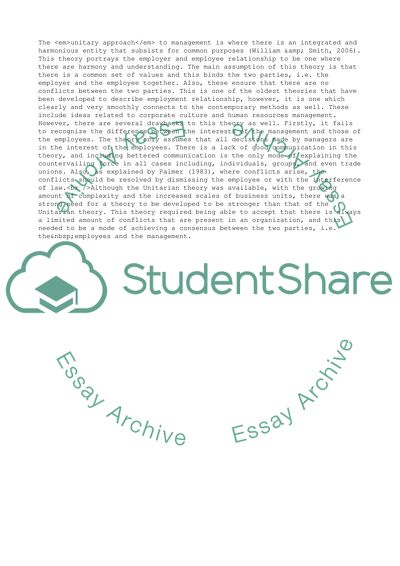Cite this document
(Unitarist vs Pluralist Approach to the Management of Employment Report, n.d.)
Unitarist vs Pluralist Approach to the Management of Employment Report. https://studentshare.org/management/1556449-what-do-you-consider-to-be-the-main-differences-between-a-unitarist-and-pluralist-approach-to-the-management-of-the-collective-employment-relationship
Unitarist vs Pluralist Approach to the Management of Employment Report. https://studentshare.org/management/1556449-what-do-you-consider-to-be-the-main-differences-between-a-unitarist-and-pluralist-approach-to-the-management-of-the-collective-employment-relationship
(Unitarist Vs Pluralist Approach to the Management of Employment Report)
Unitarist Vs Pluralist Approach to the Management of Employment Report. https://studentshare.org/management/1556449-what-do-you-consider-to-be-the-main-differences-between-a-unitarist-and-pluralist-approach-to-the-management-of-the-collective-employment-relationship.
Unitarist Vs Pluralist Approach to the Management of Employment Report. https://studentshare.org/management/1556449-what-do-you-consider-to-be-the-main-differences-between-a-unitarist-and-pluralist-approach-to-the-management-of-the-collective-employment-relationship.
“Unitarist Vs Pluralist Approach to the Management of Employment Report”. https://studentshare.org/management/1556449-what-do-you-consider-to-be-the-main-differences-between-a-unitarist-and-pluralist-approach-to-the-management-of-the-collective-employment-relationship.


